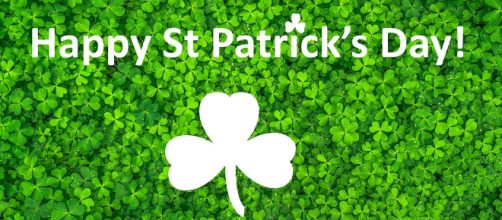The shamrock has been intricately linked with Ireland for centuries. We have come to regard the shamrock as a symbolic three-leaf plant, but it is interesting to note that 'shamrock' is not the official name of a plant but rather the Irish name for the clover plant, of which there are hundreds of varieties. On St Patrick's Day, the green shamrock takes centre stage as a symbol of the Feast of St Patrick.
Power over evil
Clovers have historically played an important symbolic role. The early Celts of Wales saw the white Clover as having the power to ward off evil spirits.
Later, early Christians adopted this belief and used it as a symbol of the Holy Trinity for the people of Ireland. While some see no historical link between St Patrick and the shamrock, some sources claim that Saint Patrick was one of the early Christian leaders to use the plant as a symbol of the Holy Trinity.
The Holy Trinity
When Patrick became a Priest and returned to Ireland, he worked tirelessly to convert many pagans to Christianity. As the story is told, St Patrick was looking for a way to explain the Holy Trinity to his would-be converts. An idea came to him as he was walking by a field of clovers and observed the three leaves on one plant. He used a shamrock (the name given to the plant by the Irish) to illustrate his teaching that while there were three parts to the Shamrock, there was only one God.
Further evidence of the symbolism of the clover or shamrock is found in a book about wild flowers of Ireland, by Dr. Caleb Threlkeld. He stated that the white clover was worn by people in their hats on the 17th of March, St Patrick's Day, with the belief that this three-leafed grass represented the mystery of the Holy Trinity.
Wearing the badge
From all historical accounts, the shamrock has been worn since the late 1600s, as referenced in the early literature. In earlier times it was customary to wear the shamrock on one's hat; a tradition which is still practiced today. In Great Britain, Queen Victoria, at the turn of the 20th century, ordered all Irish soldiers in British regiments to wear a shamrock on St Patrick's Day.
This practice was in honour of the soldiers who died in the Boer war and the practice continues today.
As an Irish badge, the shamrock has not lost its relevance today. Unofficially, the shamrock is used on many things considered Irish; you can find them on ships, books, and other accessories. And while it is not an official emblem of Republic of Ireland, the shamrock, or green trefoil, is a registered trade-mark of Ireland.
The shamrock is still regarded as a good luck charm today and not only by the Irish. On St Patrick's Day shamrocks can be seen in every aspect of the celebration of St Patrick. As for the white clover (Trifolium repens), the profusely growing plant can be seen in all its glory wherever and whenever it is in season.


